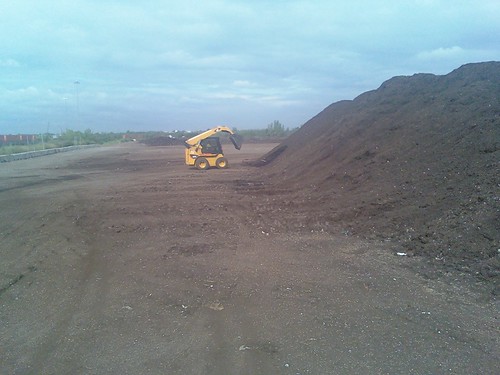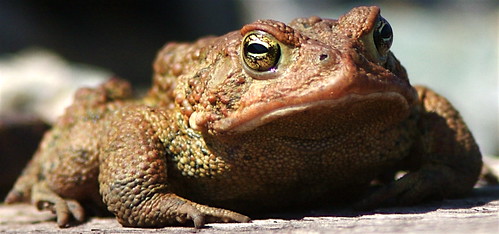Steven Earl Clemants. Credit: Brooklyn Botanic Garden
The botanical world – especially New York State, New York City, and Brooklyn – suffered a great loss recently. Steven Earl Clemants, Ph.D., Vice President of the Science Department of the Brooklyn Botanic Garden, died suddenly and unexpectedly on Sunday, November 2, 2008. Funeral services were held last Friday, November 7. He was 54 years old.
I never met Steven, but I’ve known of his work. I’ve written about some of it on my blog. His contributions in several fields, including native plant conservation, invasive plants, and urban botany, are substantial. I can only summarize.
Dr. Clemants was Chair of the Board of the Invasive Plant Council of New York State. He was the Historian and past President for the Torrey Botanical Society, and Chair of the Local Flora Committee of the Long Island Botanical Society. He was a founder, coordinator and contributor for the New York Metropolitan Flora Project (NYMF), which is documenting all the flora within a 50-mile radius of New York City. He was Codirector of the Center for Urban Restoration Ecology (CURE), a collaboration between BBG and Rutgers University. He served on the Advisory Board and Atlas Committee of the New York Flora Association. He was a graduate faculty member of both Rutgers University and the City University of New York. He was also involved with the New York State Invasive Species Task Force, the Prospect Park Woodlands Advisory Board, and the American Institute of Biological Sciences, among many other efforts.
He was Editor-in-Chief of Urban Habitats, an open-science online journal dedicated to worldwide urban ecological studies. In addition to authoring and co-authoring numerous technical journals and articles, he was co-author, with Carol Gracie, of “Wildflowers in the Field and Forest: A Field Guide to the Northeastern United States.”
The Dr. Steven Clemants Wildflower Fund
The Dr. Steven Clemants Wildflower Fund has been established to honor him. Steve’s widow, Grace Markman, is working with the Greenbelt Native Plant Center to plan a living memorial that will foster the planting of native wildflower species in New York City parks.
If you would like to donate to the Fund, there’s a PDF form to fill out and mail with your check. Email me at xrisfg at gmail dot com and I’ll send you the form. Make out your check to “City Parks Foundation” and mail it with the form to:
City Parks Foundation
c/o Greenbelt Native Plant Center
3808 Victory Blvd.
Staten Island, NY 10314
As an alternative, here’s an Amazon Associates link for the paperback edition of the Field Guide which Dr. Clemants co-authored. I will donate any proceeds I receive through this link to the Dr. Steven Clemants Wildflower Fund. The Field Guide is also available in both hardcover and paperback editions from BBG’s online store.
Related Posts
Web Resource: New York Metropolitan Flora Project (NYMF), 2006-06-02
Links
Steven Earl Clemants:
- Obituary, BBG, 2008-11-28
- Staff Page, BBG
- CV [PDF]
Center for Urban Restoration Ecology (CURE)
Invasive Plant Council of New York State
Long Island Botanical Society
New York Flora Association
New York Metropolitan Flora Project (NYMF)
Science Department, Brooklyn Botanic Garden
Torrey Botanical Society
Urban Habitats






